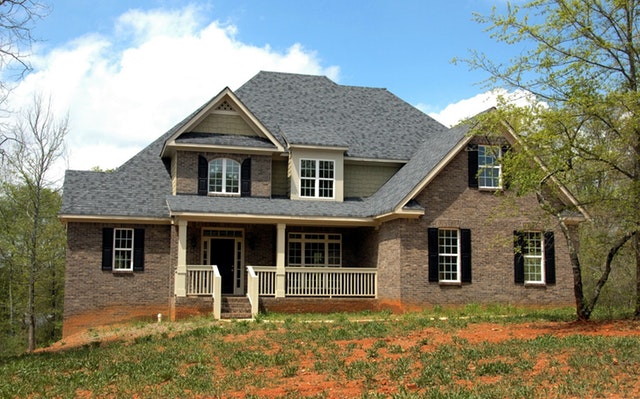The Most Popular Cities For Relocating To Get A Better Deal On A Home
Many people are looking to buy homes, not across the street, not somewhere else in town, but in other parts of the country. The motivator for this is that there are significant differences in the median prices for home sales in different parts of America. This is not a result of the places being undesirable.
Many of the places with excellent values in home prices are very desirable. In these nice cities, the lower prices are more about the local economy, the cost of living, and the availability of homes for sale.
Popular Cities For Relocation
 A study done by REALTOR® identified the most popular cities that people search for when looking for a new home in another area that is different from where they currently live.
A study done by REALTOR® identified the most popular cities that people search for when looking for a new home in another area that is different from where they currently live.
The median home price in America is $226,800.
Areavibes ranks American cities based on a livability score that considers many factors, which include the cost of living, crime, school, employment, and amenities. The livability score is a scale that goes up to 100.
Here are the top choices in the order of their popularity for searches and median home prices along with their livability score:
- Charleston, South Carolina – Median home price is $269,400. Livability score is 77.
- Boise, Idaho – Median home price is $191,000. Livability score is 80.
- Honolulu, Hawaii – Median home price is $601,500. Livability score is 73.
- Columbia, South Carolina – Median home price is $164,200. Livability score is 63.
- Fort Myers, Florida – Median home price is $160,800. Livability score is 70.
- Portland, Maine – Median home price is $248,000. Livability score is 66.
- Sarasota, Florida – Median home price is $109,500. Livability score is 74.
- Greenville, South Carolina – Median home price is $237,800. Livability score is 73.
- Tucson, Arizona – Median home price is $135,200. Livability score is 65.
- Las Vegas, Nevada – Median home price is $184,900. Livability score is 71.
Cost Of Living
The cost of living is a big factor that impacts the quality of life for the average person. The cost of living includes the cost of housing, groceries, transportation, health care, utilities, and other goods and services. The national standard for America’s cost of living is set at 100.
The cost of living index in each city is a number that is higher or lower than 100. Higher figures than 100 represent a percentage higher than the national average. Lower numbers than 100 are cities that cost less than other cities in America.
Here is the cost of living index for these popular cities:
- Charleston, South Carolina – 115
- Boise, Idaho – 96
- Honolulu, Hawaii – 182
- Columbia, South Carolina – 101
- Fort Myers, Florida – 94
- Portland, Maine – 114
- Sarasota, Florida – 108
- Greenville, South Carolina – 106
- Tucson, Arizona – 92
- Las Vegas, Nevada – 100
Conclusion
The lowest median price for a home is found in Sarasota, Florida. The city with the highest livability score is Boise, Idaho. The lowest cost of living is in Tucson, Arizona. These are all great cities to live in. For those who have the option to relocate, to get a better price when buying a home, they should all be considered as decent choices.
If you are in the market for a new home or interested in refinancing your current property, be sure to contact your trusted home mortgage professional.

 Condominium owners and buyers have previously been at a disadvantage when trying to use the Federal Housing Authority (FHA) support to get a home mortgage. Single-family homes could get better FHA mortgage deals than condominiums. In October 2019, this changes.
Condominium owners and buyers have previously been at a disadvantage when trying to use the Federal Housing Authority (FHA) support to get a home mortgage. Single-family homes could get better FHA mortgage deals than condominiums. In October 2019, this changes. Last week’s economic news included readings on construction spending, and labor reports on public and private sector jobs and the national unemployment rate. Weekly reports on new jobless claims and mortgage rates were also released.
Last week’s economic news included readings on construction spending, and labor reports on public and private sector jobs and the national unemployment rate. Weekly reports on new jobless claims and mortgage rates were also released. Telecommuting has significantly changed the housing market. More people than ever before are working from home. Younger people are especially likely to do this and become part of what is called the “gig” economy. Many are working as freelancers or starting online businesses.
Telecommuting has significantly changed the housing market. More people than ever before are working from home. Younger people are especially likely to do this and become part of what is called the “gig” economy. Many are working as freelancers or starting online businesses. For a long time after the real estate housing crisis in 2008, buyers with a poor credit history had a difficult time finding mortgage financing. It was a problem that trapped those seeking to buy a home because so many lost their homes from the inability to pay their mortgages.
For a long time after the real estate housing crisis in 2008, buyers with a poor credit history had a difficult time finding mortgage financing. It was a problem that trapped those seeking to buy a home because so many lost their homes from the inability to pay their mortgages.